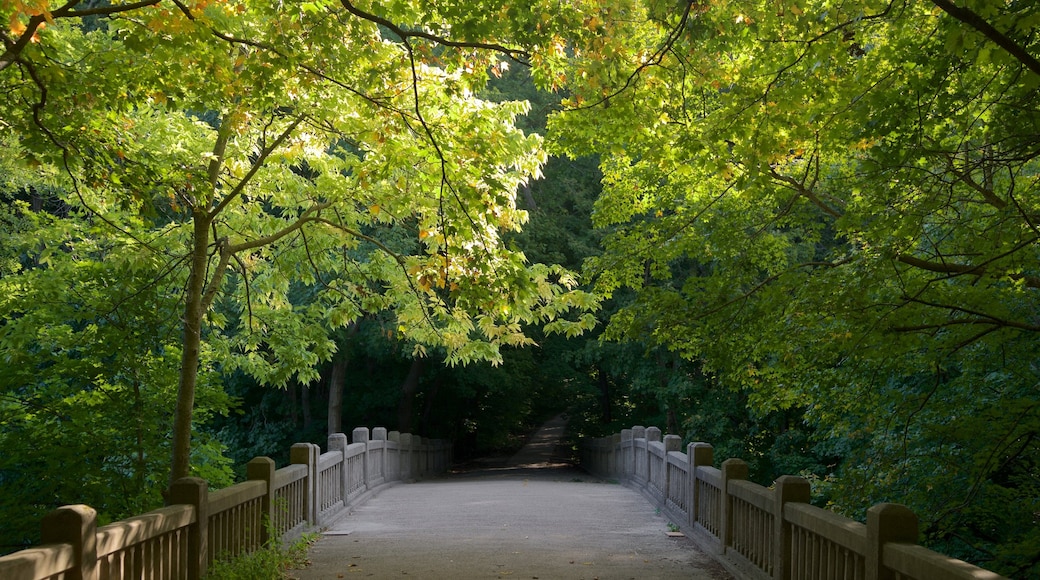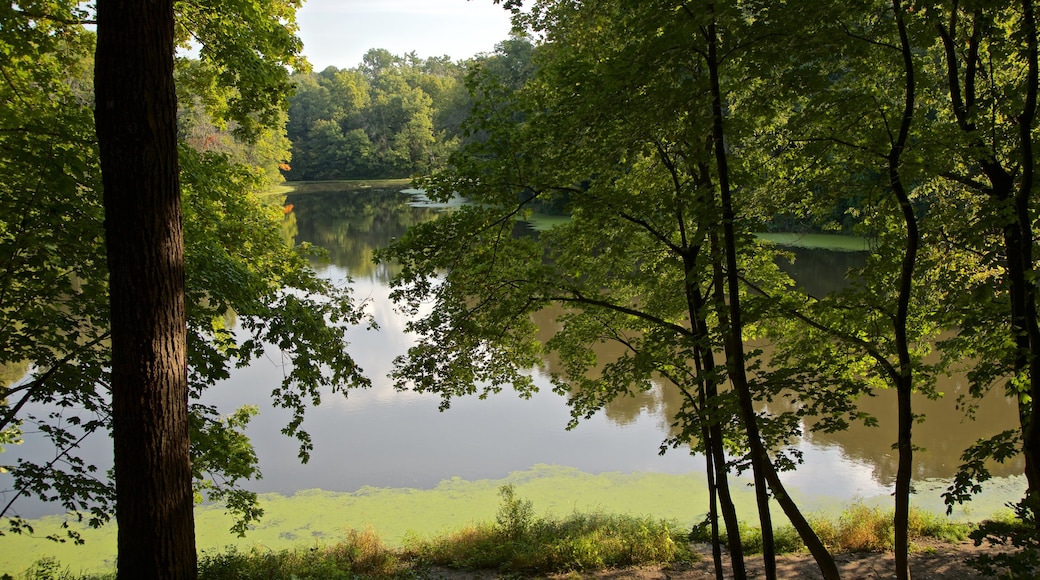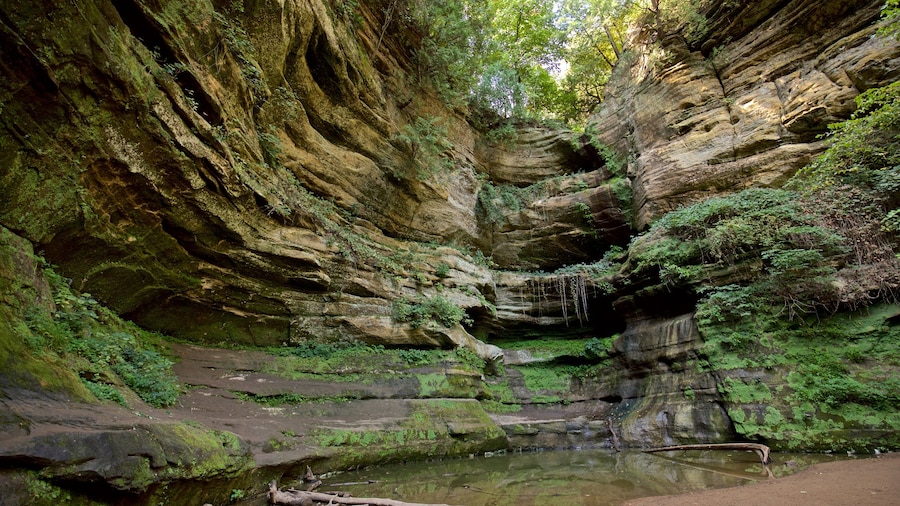Look down the chute of Cascade Falls from a rickety bridge and admire the brilliant hues decorating the canyon’s sandstone walls in this eclectic park.
Dwarfing the rock formations, forests and streams of Matthiessen State Park are the colorful canyon walls that make it stand out. The vast park has a varied terrain, featuring prairies, waterfalls and a labyrinth of hiking trails. Observe the intriguing phenomenon of water oozing out from the canyon’s sandstone walls.
Bring food and drinks to use the picnic facilities dotted around the park. Let kids enjoy the playground facilities and water fountains. Follow myriad trails leading through the park. Many of these paths are lined by the exposed sandstone walls of canyons formed by thousands of years of water erosion. Reach the middle of a bridge overlooking the 45-foot (14-meter) drop of Cascade Falls, one of the park’s highlights.
Stroll through the Upper and Lower Dells of the park’s principal canyon, which connects Deer Park Lake with the Vermilion River. Wild deer are attracted to these water sources and often visit the natural springs. Notice the different types of moss and liverwort decorating the shady canyon walls. Spot salamanders, frogs and toads in the park’s damp areas.
As you wander through the denser thickets of woodland, gaze up at red cedar, black oak and white oak trees. Let magenta and orange blossoms of shooting star and columbine plants light up your eyes in spring.
Note that the park was named for Frederick Matthiessen, a local philanthropist who bought this terrain in the late 1800s. It was donated to the State of Illinois after his death.
Matthiessen State Park is a little south of the Illinois River, as it creeps through the center of LaSalle County. Drive south from Utica for less than 10 minutes to reach the park and leave your car in the parking lot. See other nearby landmarks such as Senica’s Deer Park Golf Club, Lehigh Memorial Park and Starved Rock State Park.















